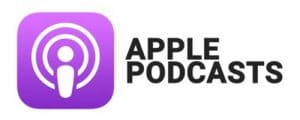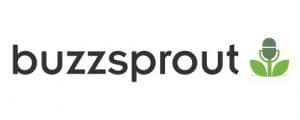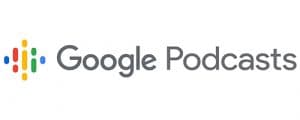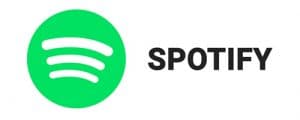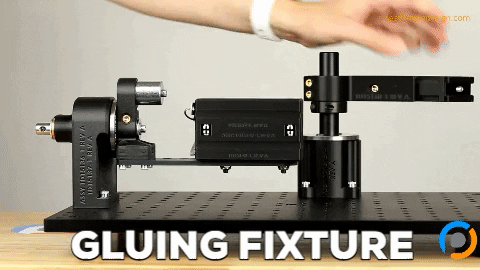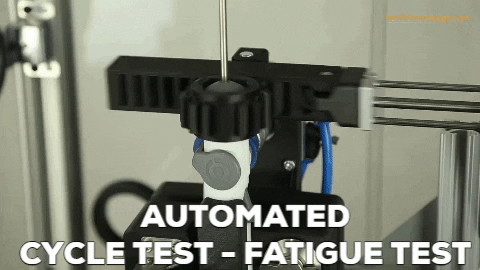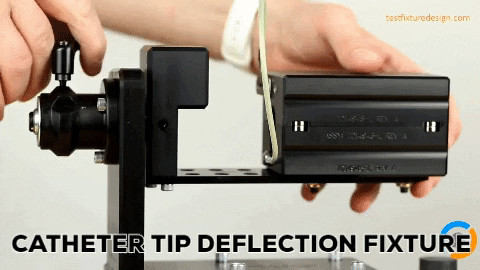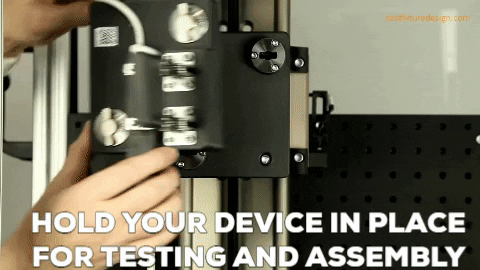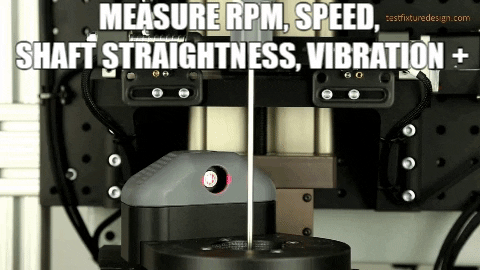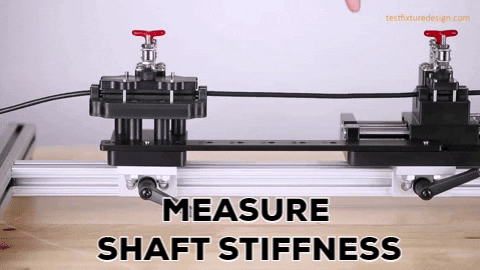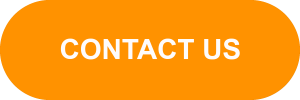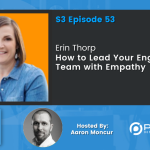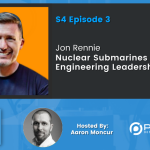Reade Harpham | Flat Org Structures, Communicating with Engineers & Philanthropic Design
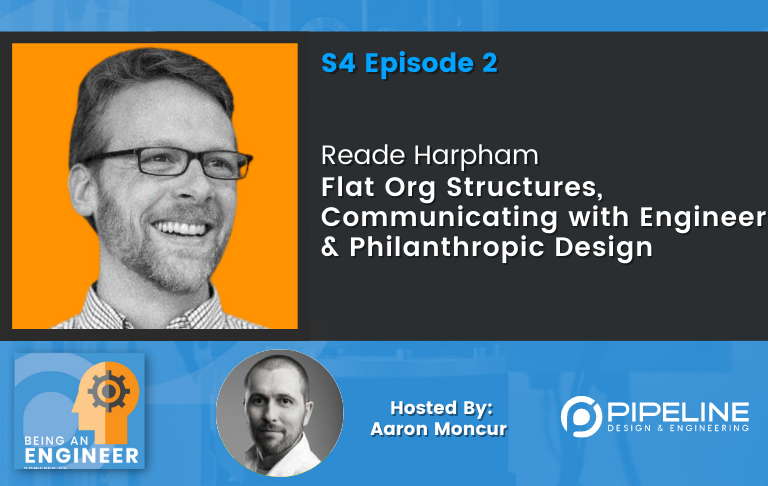
A RERUN OF ONE OF OUR MOST POPULAR EPISODES!
Who is Reade Harpham?
Reade Harpham learned early on in his career how to communicate with engineers (hint: use numbers). This skill has eventually allowed him to earn the respect of engineering teams. Reade owes this to his ability to communicate in a way that allows engineering teams to fully understand and appreciate the value his human factors team brings to the table.
He has also helped develop and foster an incredible work environment at Priority Designs (check out their website – it’s an impressive firm) where a flat organizational structure has led to supreme efficiency and empowering team members to get stuff done without the bureaucracy of traditional organizations.
EXPAND TO VIEW EPISODE TRANSCRIPTION
SUMMARY KEYWORDS
people, work, design, pd, users, technology, designer, company, battelle, priority, world, research, clients, engineering team, engineers, team, mattel, structure, little bit, developing
SPEAKERS
Presenter, Aaron Moncur, Reade Harpham
Presenter 00:01
Reade Harpham is an industrial designer who learned early on in his career how to communicate with engineers. Here’s a hint, use numbers. This skill allowed him to earn the respect of engineering teams because he was able to communicate in a way that allowed engineering teams to fully understand and appreciate the value that his human factors team brings to the table. He’s also helped develop and foster an incredible work environment at priority designs, you should check out their website. It’s an impressive firm. What you’re about to hear is an insightful and fascinating discussion with someone who empowers his team members to get stuff done without the bureaucracy of traditional organizations. So sit back as we revisit Aaron’s chat with Priority designs, Reade Harpham.
Aaron Moncur 01:03
Welcome to the being an engineer podcast. Our guest today is Reade Harpham. Reade is a product designer who has spent much of his career working in the healthcare and medical device space, but has also been deeply involved in consumer and industrial markets as well. Prior to his role, his current role he held titles from industrial designer to Director of Human Centered Design, and currently serves as a senior medical device specialist at priority designed. Reade, Welcome to the show.
Reade Harpham 01:35
Thank you very much. Thanks for having me.
Aaron Moncur 01:37
You’re very welcome. So one of our former podcast guests introduced us and I’ve been going through your LinkedIn profile and looking at the comp of priority designs, the company in which you work and super excited to talk to you. I’ve got all kinds of questions that I just want to pick your brain about. To start with, I’m going to ask what what made you decide to get into the product design space? What What made you decide to become a product designer?
Reade Harpham 02:06
It’s actually it’s kind of a cool story. So when I was a kid, I built models model cars all the time. And I can remember when I was a sophomore in high school, there was some some assignment that was like, what are you gonna do when you grow up and, and so I looked around for jobs that I could do that would let me build models, and it was with my age myself, but it was right when Star Wars came out. And you know, the I think it was Empire Strikes Back came out. And I was so enamored with the models and stuff that they use that I thought I could build models for, for movie sets. My father who was an architect said, you know, you should, you should look into industrial design, because it’s kind of a little bit of both, you can, you can use some art, you can use some engineering, and you can use some you can do model building, it’s all sort of encompasses that. And so I looked into it. Ohio State at the time happened to be, you know, a really great school, when I was when I was able to go and so yeah, it just sort of I mean, I literally stumbled into it. But as soon as I got into it, since I did some research and got into the, into the school and some of the preliminary classes, I thought this is, you know, this is amazing. You get to, you get to see things, you know, come up with ideas, and watch them go, you know, come to fruition, it was just, you know, it was mind blowing, and I’ve loved it ever since.
Aaron Moncur 03:18
Tell me Tell me a little bit more about your experience with Star Wars. I want to hear about this. I was born in 79. And I think it may be that’s the years, the first Star Wars came out. So I didn’t have the experience of watching this just being blown away, because it was so drastically different and innovative. As far as you know, special effects, visual effects. What was that, like when you watched it?
Reade Harpham 03:43
It was probably too young to pay attention to all of the stuff that was going on. But it was just everything about everything about the story. You know, at the time, the visuals were you know, there’s a giant rookie, you know, there’s
Aaron Moncur 03:59
Okay, so you said that you’re passionate about integrating end user insights into the product development process? Can you share maybe a few examples of when and how you’ve been able to do this effectively.
Reade Harpham 04:14
Early in my career winnings, I worked at a large r&d company and and it was, it was a lot of technology push. So we were developing some pretty amazing new to the world technologies. And I can remember watching those technologies, in some cases fall short, because the people who are intended to be using those technologies, they weren’t really designed for those people. So I can remember on a number of occasions, you know, from surgical tools to things like clinical analyzers. Being able to be the voice of the user and the process. And for example, you had a system that comes to mind is one that the technology allowed throughput of slides to be like triple the technology itself triple what it could do. Today, but the way the system was designed, the users couldn’t even put enough slides in what kind of
Aaron Moncur 05:05
slides are you’re referring to?
Reade Harpham 05:08
These were pre made microscope slides.
Aaron Moncur 05:11
Okay, so they’re putting these slides under under a microscope and analyzing it. And then moving on to the next slide.
Reade Harpham 05:16
Well, that’s the way they used to do it, this system, actually, you took the what was so groundbreaking about the system is it was an imaging system, and the user would pipette out a sample, put it in a little vial, and then put the vial in a rack into the system. So it was expediting, the reading of these things in the system could do some ridiculous amount of, of readings per minute or per hour. But while the technology was amazing, the actual Achilles heel of the system was that the user was unable to put enough or unable to make enough samples, prep enough samples in time to fill the system. So, you know, to me, that was one of the biggest in earliest moments where I was like, you know, this is, technology is great. But if you have to have a user involved in the process, then you need to give equal opportunity to the user to have inputs to the system. And that’s sort of the foundation of where I started with this, you know, passion about making sure users are involved, and their voices are heard and they’re being thought about throughout the process.
Aaron Moncur 06:21
And how do you go about doing that? How do you decide at the beginning of a project, okay, we’re going to do, you know, X, Y, and Z to make sure that the user’s voice is heard, and we don’t end up with a fantastic technology that no one can use.
Reade Harpham 06:37
So at the time, it was just being loud, obnoxious about it, it was back before the FDA really came down on on human factors and incorporated human factors in the process, like you do other, you know, as a risk assessment, risk mitigation. So prior to that, it was just like, you know, getting invited to the table. And, and being a champion for the users to, to let the teams know that this technology is great. But with the users can’t use it, then it’s pretty much useless. And so the role is to, to allow the users to have input, but also let this technology live up to its expectation. So just from the very beginning, letting people have a voice and going in and making the assumption, I don’t know what a user needs and going out and talking to them, interviewing them, watching what they do, getting that knowledge and then communicating that knowledge back to the team or having having those insights and inputs as part of the early development process. Which is another, you know, benefit of being invited to the table early is you get to have impact before things are to set in stone. Before people are already so far down the path of development that that a, a what seems to be a minor change actually is a major change. Because you’re so far down the path.
Aaron Moncur 07:46
I really liked that example be loud and obnoxious. That’s a great way to put it and, and that every team needs a champion, right? A champion for this stuff. Otherwise, it’s just not going to get done. I’m curious when you are, you know, your teammates were the champions for these human factors. Items. Did you ever get pushback from other members on the team members? Maybe they’re like the project manager or, you know, some some dance mechanical engineer who needs those guys? Or they were like, Yeah, Reade. That’s cool. I mean, I get it. But that’s kind of, you know, touchy feely stuff, we don’t really need to worry too much about that
Reade Harpham 08:23
all the time. All the time, all the time. Really, I
Aaron Moncur 08:26
kind of didn’t think that was going to be the answer.
Reade Harpham 08:28
So, you know, this, this is this was a while ago, you know, when I first started in this business, it was, you know, it was 95. So, at the time, yeah, there was a lot of pushback. And, and, you know, people, what I realized, while working with engineers, and this was an this is a really important learning for me was to know the Know your audience. So you know, at the time, you know, I was a obnoxious designer, and I was on a project. And I was like, no, no, you know, this is what you guys need to do, because the users needed, you know, the users want to feel empowered to use it. And, and they’re like, what, you know, the information you’re giving me is useless, you know, set for the feeling that I got was they didn’t appreciate the insights, or they didn’t think that research was, you know, that we were doing was important, valuable. What I learned after working with engineers for a while, is that engineers just wanted to know what their constraints were. So they could solve these problems. And so as soon as I recognize that, and I recognize that the engineering team was actually my user set and not the patients, once I realized the engineers were the users of my outputs, the story changed. And so rather than say to them, you know, hey, this product needs to empower the user, I was able to say, you know, this device needs to have a textured handle to allow the user to grab it with wet hands and not have it slip out that gave them a framework and a target. And once once I changed my frame of mind, and how I presented these things and the way I presented to the development teams the user needs it completely changed the game with how we approached it.
Aaron Moncur 10:00
That’s that’s a huge insight right there. So the information, the research that you and your team was doing was super important and valuable. But the engineers didn’t recognize that because it wasn’t being presented in terms that they understood it, it wasn’t being presented in, like an engineering requirement form. That’s what you’re saying, right?
Reade Harpham 10:19
That is correct. And what was what’s so ironic about that, and I still see it happening sometimes is that you get design teams, industrial design teams, or research teams who are so adamant that they understand the users, but they don’t understand their audience, which in essence, are their users. So you get these notions of unusable requirements. And so once you recognize that the people who have to use your outputs are engineers, and they want requirements that you just change, you change the way you present it.
Aaron Moncur 10:44
And speaking as an engineer, I can see how, like, if, if a designer told me, okay, this device has to feel good to the user to hold, I’d be like, what is good? No, I don’t know what that is. And it’s going to be more trouble to try and figure out what good means than it is to just kind of sweep it under the rug and do my thing. But if I hear, okay, this, the handle has to be a drama between you know, this, and that short a, and then needs to have, you know, bumps of this size space to it this spacing, then I’m like, Oh, I get that. Sure. I can do it. No problem that that makes it really easy for me as, as an engineer to implement that. So that’s, that’s a huge insight I made it comes down to communication, right? Like, like so many things?
Reade Harpham 11:29
Absolutely. Oh, yeah. I mean, it’s just recognizing your audience and knowing how to communicate. And the other thing is not, you know, in the early days, when, when I would get the feedback of okay, thanks. But no, thanks, we’re great, you know, this, this is not very helpful. I always thought it was that they didn’t appreciate what we were doing. And when I realized, you know, was that they just, we weren’t communicating on the same level in the same in the things that they needed to hear. So once I did that, their, their expectation and their desire to do these things was right there. They just needed to target and my job was to give it to him.
Aaron Moncur 12:01
Well, that’s great. I love that. Okay, something else you’ve said is that you strive to help healthcare clients find balance between technology, and humanity. And this might come down to kind of the same thing that we’re just talking about. But I thought that was a really interesting statement. And wondered, can you tell me a little bit more about that? Like, what do you mean, specifically, when you say humanity,
Reade Harpham 12:24
basically, it’s people’s ability to do what you want the technology to do for them. You know, there’s nothing more disappointing than anything. And I, we talked about this a little earlier, and an amazing technology that, that falls flat, because the user, or the the end, the end user of that technology, the end recipient, that technology, either doesn’t need it, or know how to use it, or wants to use it, but it’s too hard to use. So, you know, in my past, in working in environments, where you’re developing new to the world technology, understanding the end user and making sure that what we were providing to them was relevant was it was key. And also, you know, going the other direction, making sure that everything is an equal. So the users, you know, I would argue that some types of pumps should not be easy to use. Because if it’s easy to use that a child can use it, they might hurt themselves. So the whole notion of Oh, and he’s got to be easy to use. It’s actually not true, you have to find this balance between what who are the users? What’s the technology enable them to do? What do you want the technology to do? And find that balance between, you know, allowing users to, to, to use the technology to its full potential, but also allowing the technology to not sort of bend the users to its will?
Aaron Moncur 13:36
I get it, I get it, that makes a lot of sense. Matching the technology to the user, as opposed to just always needs to be easy to use? That’s an interesting point. I don’t think I’ve I can’t recall hearing it put quite that way. But like a pill bottle, right, same thing. You don’t want to pill bottle but the super easy to open. Where else little kids can open it and get themselves sick. Great insight. Yeah. Okay, you. So you’re working at priority designs right now, which is really cool. Product Design product development company. We’re gonna get into that in a little bit. We’re going to travel back in time, just a little. And you spent about I think it was about 16 years working at a company called the tell which is I hadn’t heard of them before. But they seem like a pretty big company. And now I’m kind of embarrassed for not knowing who they were but apparently the world’s largest nonprofit independent r&d organization. So I’d love to hear a little bit about Patel and like, Who are their customers and and what is unique about about the experience of working at a company that at a engineering or r&d company that is a nonprofit, like what about that nonprofit? NIST makes it interesting or unique?
Reade Harpham 14:55
Yeah, well, it’s Mattel is you know, it’s the biggest company that nobody knows about. It. But
Aaron Moncur 15:01
thanks for making me feel better. Oh, really, it’s
Reade Harpham 15:03
everybody had that same reaction. What’s unique about Mattel is it’s, it’s a, it’s a non charitable trust. So it was started in 1920 something 28, I think, by the will of Gordon Patel and his mother. And it was founded to advance technology and civilization through technology advancement and technology discovery. So its fundamental purpose in life is to develop technologies and advance them for the greater good. And it worked in all kinds. I mean, it works in every area, you can imagine. You know, I was in the medical device group and was there for my entire career at Mattel. But they have they do a lot of government work, they do a lot of healthcare work. How you might have heard of them lately is they recently developed a container system that that cleans at 95 masks, and they got approval for it from the FDA and like, really, you know, record time, I’m not sure the current status of it, but it was these, these big containers that they basically dropship to these hospitals, and were able to recycle and reuse and clean and 95 masks. So, for me, what was amazing about that company and working for that company was a the story. The people behind it, you know, what, what it meant to the community, part of being a nonprofit is you take some of the profits that you make, and you give it to the communities that in which you serve, which is part of the trust part of the will. And so that was sort of the driving force. The other thing was the people who work there, and the technologies that we worked on, were, were so far ahead of their time. I mean, it’s hard to remember, it’s hard to realize when you’re there in the moment, the things that you are looking at are 510 years away from being in the market sometimes. And you’re just there, because it’s just normal. It’s like, oh, this is everybody gets to deal with this kind of technology. And then you step out of that I, you know, I left, I left the towel, like almost five years ago, you step out of it, you look back, and you’re like, oh, man, that stuff was amazing. It’s sort of the big our research and where we’re net, Mattel manage the national labs. And so there’s a lot of fundamental technology thinking going on, and the group that I was in the product development, and then then medical device group, we helped translate the big arm to the r&d. And we worked with commercial clients, mostly to help them develop, either create technologies for new medical devices or develop their own medical devices. But yeah, for me, it was as a as a freshly minted graduate in design, thinking I was the best thing ever and on top of the world, and I knew all the answers could go into such a storied engineering company, and get schooled pretty quickly on the fundamentals of engineering and physics, and all the things that you really can’t change. It gave me an incredible appreciation for that technology, field r&d, and sort of the give and take you have to have, but also gave me a chance to, to, as we talked earlier, communicate to people the value of the human insight the human input into this system.
Aaron Moncur 18:00
Was Was Battelle is Patel, kind of like a university and that there’s a lot of r&d going on, but maybe not much commercialization, or are they doing the commercialization as well.
Reade Harpham 18:13
It’s a little bit of both. So it’s, it’s, it has elements of university where there’s some fundamental research going on and has elements of commercialization where they’re, they’re sometimes developing their own internal technologies, and either licensing them or developing products that have that embedded in it. And then they’re doing a lot of commercial work. So it really, you know, exposed me personally to a lot of different different areas. For the most part, it’s probably, they probably do some more research and development than actual commercialization of their own of their own products. I mean, when I say development, it’s product development for outside commercial partners.
Aaron Moncur 18:49
So I’ve heard of, of course, nonprofits that are focused on I don’t know, for lack of a better word, charities, but But r&d, I would never put r&d into that bucket of, of a charity. I mean, this is a this is business, we’re developing technologies that are going to be commercialized and pushed out into all these different markets. What What was the culture like there at Battelle, did you get a sense that like people weren’t? I don’t know, it sounds bad to say this way, but as driven because it was a not for profit, or was that just not an issue at all? And maybe people were more driven because they were there because more of a sense of purpose than than of economic value? Well,
Reade Harpham 19:37
it’s all the above. So what we what the financial people at the tail would tell you is that we are you know, we would tell is a not for loss. Okay, all doesn’t make a profit. They can’t distribute those profits to the community. Yeah. And there is incentive to, not financial incentive, but there’s no incentive to make by profit so you can give back to the communities that they serve. And that was the motivation for the people who work there. Not only was it amazing, super deep technical work, and challenging technical work, it was also the benefits of that work to humanity and the people who you know, to the world at large and that the the outputs that people worked on, not only from a technology standpoint, help people, but the profits that the town made, would go out to the communities now there’s some people who are live in Columbus who will hear this you know, there’s a number of Patel Patel Park and Patel Hall, you know, there’s a lot of places where Patel donates their, their their dollars and their time, you know, volunteer time in the communities and that yeah, that was a motivation for people over and above just the amazing technologies that people get to work on.
Aaron Moncur 20:48
Wow, how interesting. That’s fascinating. You’ve traveled for work apparently doing speaking? engagements? Yes. Okay. A resounding yes. All over the world. A couple places I read about were the Arctic Circle of Finland and the shores of Lake Victoria in Uganda. I mean, just reading those names, that conjures up images of grandeur. Well, how has traveling the world and experiencing some of these different, like societies and cultures affected the way that you think about the world and your role within it as a designer.
Reade Harpham 21:26
So yeah, I have traveled throughout, I have the opportunity to travel a lot. In my career, even before I had a job I went to, I spent some time in studying in Finland, and working at a small design consultancy in Germany. And the first thing it taught me I think, as anybody who travels a lot knows that the world is small, and people are a lot of like all over the world. So that was sort of, for the, for somebody who’s never traveled outside the United States as a, as a kid, it was really important for me to learn that lesson, that we are all similar, in a lot of ways, just happened to be living in different parts of the world. But I remember specifically a moment when I was in Finland with one of my roommates that, you know, somebody made a joke and that we laughed at the joke. And it was this in what what became so acutely aware, to me is that humor, in that scenario, humor was universal. You know, we come from different cultures have different backgrounds, and different ways of thinking. But we all thought the same thing was funny. So that was an eye opener for me, and how common in some cases, we all are, you know, fast forward from those experiences. And after living there and traveling around fast forward in my career, my ability to travel overseas and have overseas clients and do it with confidence, because I’ve been there and I understand, you know, just the simple things of how to get around, but also the more nuanced things of how to potentially interact with different cultures and those types of things. It’s, it was incredibly important to me as a person, but also in a career. And, you know, from a designer, sort of all stemming back to there’s, there’s a common theme in things that people want and need. And there are nuances to different cultures, but for the most part, you know, you can find probably a trace of similarities across many things. You know, the, I had an opportunity to do some work with the Gates Foundation in my past, and that’s what took me to Uganda. To me, that was just that was mind blowing, because the, the not only the opportunity, and the ability to affect so many lives that the project would have, would allow, but just getting to know different cultures and the different amounts of need, that Sub Saharan Africa has, you know, when it comes to health care, and, you know, prevention of disease. To me, it was a complete shift in how I thought about my role in my ability to give back to the world as a designer and a developer. You know, it’s what part of the reason why I shifted all into medical and away from you know, consumer, because medical to me has a fundamental good about it, you know, you’re you’re doing the work because you want people to help people get healthier or better. So that’s really that was part of my all in when it comes to medical focus on medical work.
Aaron Moncur 24:16
You had mentioned earlier or not during this podcast, but you had mentioned philanthropic design, does does that philanthropic design tie in to some of the experiences like you had at Uganda, but just realizing that not everyone has the same very high level of health care that that we have here in the United States and many other places in the world. But how does that philanthropic design tie into some of these experiences?
Reade Harpham 24:43
It made me think about, you know, some some entities give their money, and some entities give their skills and it really made me start thinking about the notion of skills, volunteerism, and that, you know, if I were to write somebody a check for $100 it would go so far. But I could give some I could potentially give a lot more value if I could help somebody who’s developing a product for Sub Saharan Africa or Africa or, you know, even in the US, if I could donate my time and my knowledge, to me, that was much more valuable than just writing checks or donating money. And so that’s when I kind of that’s sort of philanthropic design of the notion of skills, volunteerism, where, you know, you’re really donating your unique capabilities and your unique perspective to people who can’t necessarily afford it or know they need it. You know, some companies that we worked with, in the past, they couldn’t afford to use a large r&d company, but they still needed our help nonetheless. And so that’s where it’s where you start to think about it, maybe maybe we should start to donate our, our our skills and our capabilities more than just our dollars.
Aaron Moncur 25:50
It sounds like you’ve had the opportunity to do that. What was that at Patel? Or has this been PD as well? Or where have you been able to exercise that philanthropic design?
Reade Harpham 26:02
So it was, it was while I was at Battelle, and it was inspired by Battelle, but at the time, it was not endorsed by Mattel. And that’s a whole nother that’s a whole nother podcast. But so so it was inspired by the notion to do to do good things. And so the work that we that we were doing was engineering. The specific project that we worked on was grain thresher, that helped people get higher yields out of small farms in Mali was the specific case that we were working on. And that just was from a you know, that was a random meeting chance meeting I had with somebody who was a volunteer group who came out of General Mills when I was at some trade show in Minneapolis, and was one of those ridiculous moments in life where all these things come together, and everything just sort of happens. So, so we created a little small, I mean, it was a nonprofit, it was called one lab. And we you know, we the goal was for us to donate our skills and capabilities to help these major problems across the world. And so myself and a couple other guys from Battelle got together. And we went to a local Fab Lab and you know, hammered out a portable grain thresher that one of my colleagues pack in a suitcase and took with him to Mali and twice and did some testing. And it inspired a couple of other nonprofit middle spinouts to do their own thing. It was really fun for me to see that happen. And that’s where I kind of got my first taste of the power of being able to donate your skills to these kinds of problems. So yeah, that’s really where I’ve sort of got the eyes on that’s fantastic.
Aaron Moncur 27:42
Thinking about putting a prototype in a suitcase and taking it, you know, halfway across the world, that’s not an opportunity that most of us get to have. How rewarding? Yes. Alright, so next question. Reade you work now at priority designs, PD. And to be honest, I have a little bit of a crush on priority designs. I mean, I looked at the website, and PD, you guys are legit. I mean, this what I see on the website anyway, this is what I think of when, like when I was a college student, and I thought, yeah, I’m going to work for a product development company, I’m going to design new products, what I see on the PD website, that’s what I thought of I mean, you guys are like vertically integrated, you get design and engineering and soft goods and research and software, it looks like you do it all. And I kind of have a crush on PD. So not sure it is fair, thank you. Not many product development firms get to kind of the scale and the level of capability that PD has. Maybe can you share a little bit about why do you think that that priority has enjoyed the success that it has? Like what are you guys doing so well?
Reade Harpham 29:04
So let me first start by saying I shared and share your crush and here’s why. So I when I was in college, PD was actually I was I was priorities first intern. They had back when they were a small, you know, as company of four people in a garage. And I stayed there for a bit and I left and had a career you know, went to Battelle and had a career there and and always admired, the way PD operated and the way they just their personality and their presence and just the things they did they did cool design and you know, they seem like they had a good time. So, five years ago when I left Mattel to go to PD you know, to go back to pt to to help them focus on and build up their med device capabilities. You know, from the outside it looks one way and then you get inside. It’s like It’s exactly as you would have expected it to be it is it is probably the most authentic place I’ve ever worked. Wow. One of the things that to me, really allows us and again, coming from a large organization, where there was a lot of hierarchy and a lot of structure. And there was a lot of, you know, layers, you had to go through PD, and I am now convinced there have to be in for there for five years, PDS a flat org, or flat structure, we have four principles. And then there’s everybody else and everybody is equal. And to build on that it’s now last few years, it is an ESOP. So it is an employee owned, flat structure. And what that does is it gives everybody the autonomy, to make the right decisions for the client, and make the best decisions for the client in mind. It helps us be nimble and quick. And how we react, it helps us think differently about way we want to approach something, it gives everybody from a junior designer all the way up to a senior Pertino, Senior Engineer, everybody has equal say at the table. So you have and I’ve heard this a number of times from new staff that come in, and they’re like junior designers, and they are on the first phone call with the client. And when we asked them the question, they’re chiming in, and they never would have been able to do that at another company. Because you know, you have to go to the, the account manager or the senior designer or the design director, and it just doesn’t allow for this open and organic communication. The other thing that we that we do so well, that I’ve seen over the you know, in my time there, because of that flat structure, and because of that motivation to just do do cool work and have a place for people to go that they enjoy, we’ve been able to grow into new places organically, you know, there is no, you know, you’re gonna have 50% year over year growth, and we’re gonna get into this space, and we’re going to make this much money in this space. It doesn’t, we don’t work like that, you know, we grow organically into, you know, it started as a design firm, with designers, and then it grew and engineering because our clients needed engineering. And then we started doing some soft goods work for sporting goods and in soft goods work turned into wearable medical devices and medical devices, you know, expanded as you can imagine. And then when I, you know, when I joined, coming from Mattel, and working in a place that have these multidisciplinary teams, but still had the, you know, the bureaucracy of a large behemoth organization, and I came to priority. And it was like, somebody gave me the keys to a to a racecar, I mean, all of this capability, all of this interest, all of this knowledge and, and capabilities in the building the machines we have. And then we could move, let me
Aaron Moncur 32:35
ask you a little bit about the flat, the flat hierarchy or structure at a priority because I love that, that setup that’s like that’s my preferred way to work. And I’ve talked to other design firms that they started out, you know, they’re kind of small, maybe 510 15 people and they did the flat structure and that worked great. But as they grew as they got, you know, 2030 4050 people, it was really hard to maintain that flat structure. What I think priority you guys are what, 5060 people something like that?
Reade Harpham 33:08
Yeah, we’re 65 pushing, maybe almost 70. Okay. Okay,
Aaron Moncur 33:15
so how have you been able to maintain that, that, you know, flat structure with so many people?
Reade Harpham 33:20
So it’s interesting that, you know, we’ve just gone through when we became an ESOP. You know, in the company, you know, we all became employee owners. One of the things that was, you know, one of the reasons for that was the founders of the company, Paul, most colada, you know, they’re ready to, they’re ready to move on. So the next five years, they’re probably going to, you know, retire and they wanted to, they wanted to sell the company, but they didn’t want to, you know, at the time, a lot of design firms were being snapped up by large companies, like, you know, I think lunar was purchased by McKinsey. And, you know, you had these huge companies who knew design was a relevant thing. And they, they knew there was value and they wanted to buy versus build. So they went on to step up these companies. I mean, there was a, there was a period of time when there was like, in the news, every couple of weeks, there was a large design from that was, was being purchased. You know, Paul and Lewis recognize that that probably wasn’t because of our culture, that wasn’t going to be a good fit. They didn’t think nor did they hear any feedback from those companies who had been purchased that it was good to their culture to be snapped up by large companies. And you and as UNF never became, you know, people started watching you a little more closely, and there were some rules you put in and, and the other option was to shut it down. And that didn’t make any sense. So as part of the ESOP, where you sell, you basically sell the company to the employees. Part of what’s happening is that we’re putting in a structured and unstructured structure. Now that sounds stupid, but it’s, it’s it’s loosely based on the notion of a holacracy. Where we have now and we’ve just seen, we just did this the beginning of year and the pandemic, you know, hasn’t messed with this at all. Whatever. It’s kind of wreak havoc with it, but we have we have we, in essence, What are circles, it’s not circles in the Zappos way, you know, it’s not that defined, but it’s like we have capability areas. So we have a UX team and a research team and an engineering team and a softgoods. Team. And within that group are people who spend 60 70% of time in that space, a lot of people cross over, we have designers who are in UX, you have HF who do who do UX work, and so on, so forth. But in these circles, you know, each circle has what we call category leads, or category points. And those are two, three people in the circle, who have been chosen by their peers to represent their capability to the larger group. And it’s not it’s not a managerial position, you don’t have any managerial responsibilities, like you don’t get to judge somebody, whether they’re doing this or doing that, you are, in essence, facilitating that making sure that that things are going as, as they should, and that the voice of those team members are being heard. And that’s a rotating a rotating role. So so there isn’t anybody who’s going to be in that role for more than a year at a time. Okay, okay. And so what that does is it gets rid of anybody who might be me, you know, not everybody is a good manager, and everybody’s a good communicator, and that’s fine. Gotta play to people’s strengths, some people might not be comfortable at all, because in some cases, you have to have challenging conversations with staff and with clients. And sometimes, you know, you’re, you’re responsible for making the ultimate decision on something, and some people don’t like that, that accountability. Yeah. So, but what we’re, what we’re hoping is that it will give people a chance to be in this role, it’ll give people a chance to learn how to communicate with them, you know, with others and their team. And it sort of builds to this notion that we all are part of the same entity, and we all have equal input. You know, and I mean, there’s a managerial team, there’s a serious set of principles, you know, for four of us who oversee kind of the day to day operations, you know, of the company, but we don’t really have any kind of heavy hand in that we just sort of, you know, I’m, yes, I’m a principal, but I also do a lot of research and project management. So it’s not like I’m sitting there in my office, you know, running numbers on a spreadsheet. So everybody’s actively involved in all of the all of the way the business runs.
Aaron Moncur 37:10
So there’s still, you know, traditional project managers. It’s not like, you know, teams are managing themselves, there is a project manager for a project. Is that accurate?
Reade Harpham 37:22
In some cases, yeah. And I’m not in all cases. So, you know, we do programs that range anywhere from $5,000, to, you know, a couple million dollars. And we can be profitable with a $5 $5,000 project because of our structure, because we don’t have a lot of overhead. And we don’t have you know, we, we have people who manage projects, we don’t have PMPs, you know, we don’t have professional project managers, but we don’t necessarily need them, because our programs and our clients don’t require them. So some programs are self managed, if you’re a senior person on a small program, you can manage yourself, you don’t need somebody, you know, pushing you to do something, you know, a couple of the larger programs we’ve had in, you know, we’ve just brought it in the last couple of months, honestly, they require, by necessity, a full time project manager you wanted to programs I’m on for the next 12 months, and I’m the full time pm, but it’s because there’s like, you know, it’s a full, it’s a full scale product development, medical device development activity, that’s 12 months long, you know, and there’s a lot of things going on, and you just, you know, I’m there to provide cover fire, you know, to allow the teams to do what they do, without having to deal with the minutia of making sure we’re on budget and making sure, you know, we got scheduled with the other PM, and we were trying to find times, for me, it just mechanics of a large program. So it depends on the program. But a lot of the time, you know, I think for most probably 75% of the projects, you have a project manager, but it’s not. It’s not a formal sort of formal role. It’s like a senior designer who’s overseeing the program, running the numbers and doing the books and you know, in billing, but also provide the inputs and guidance to some of the junior members who might be on the team. And, you know, working on the program themselves, you know, we don’t have we don’t have the structure and we want to keep our overhead low. So we don’t have a bunch of PMS, who all they do is is project manage.
Aaron Moncur 39:05
Okay. Okay. And in the cases where there’s more of this, like senior design lead, is that individual also the one who’s kind of assigning tasks to the team and making sure that you know, this task got done. Okay, what’s next? Let’s move on to this part.
Reade Harpham 39:20
Yeah, so So right now, for example, we have on the on one of our programs, we have a human factors tech lead, a mechanical engineering, tech lead, and a design tech lead. And pretty soon we’re going to we’re going to add the UX UI technique. And those people are looking at the RACI chart, those people are accountable for the quality of the deliverables that are on that program. And they are working with their you know, the team, it’s not their team, they’re not, you know, they don’t have anybody who reports to them, but they’re working with their, the design team that they have, that they and we all have assembled and they’re making sure that everybody you know, they’re getting the inputs and saying what do we what if we did this and they’re, you know, they’re assigning in some cases assigning tasks, but it’s not a It’s playing to people’s strengths. It’s not you’re gonna do this, and you’re gonna do that it’s basically, okay, we have, we have these three prototypes to build, you know, a mechanical one here. And this is more of a user interface, who wants to work on what things and helps people play to their strengths. So it’s a lot more facilitation than it is direction. Again, I think that goes to our ability to be a flat structure and to be a very efficient flat structure.
Aaron Moncur 40:24
Do you think that works for most any, you know, engineer, designer, team member or have has PD had to kind of find the right people that are able to work in an environment like that,
Reade Harpham 40:39
it’s absolutely had to find the right people. I can’t tell you the number of people we’ve interviewed who have left saying, I don’t know how you guys get anything done. And even honestly, I myself when I started, you know, it was like, this is a, this is like a free range. This is a bunch of free range designers, how does anything get accomplished
Aaron Moncur 40:57
the wild west out there, right? So
Reade Harpham 40:58
it’s the Wild West, because doing but you just have to, you have to be comfortable in that. And it’s not like we’re just a bunch of people bumping into walls, you know, we, we get stuff done. And we get it done well, and and after a while, you just you understand the heartbeat in the pulse of the company. Some people absolutely thrive in it, they come in and are like, Oh, my God, this is what I’ve been looking for. I find that happens when people who have been somewhere else first. And they come in and they recognize, wow, this is this place allows you to do amazing things, and you get to do them the way you want to do them with support from this incredible network of people. And people who are more junior, they don’t know any different. So they’re like, this is cool. This place is great. What I find, and this is, you know, just about every time somebody who comes in who places value on climbing a ladder, or a title, or reaching a certain dollar value, no dollar amount that they don’t if they even make it in, they don’t last long, because that’s a big point. Yeah, it’s a huge point. And PV is not a place that you go to become director of anything, you know, PD is a place to go to do really cool stuff with great people in, you know, for a company that you believe in. And, you know, it’s not like a cheerleader, it’s kind of, you know, we all kind of are but I coming from an environment that was different than that, that was hierarchical. And you know, there were management levels, and I was on the track and blah, blah, blah, you see kind of get further and further away from the work and you start to, you know, having ladders to climb and things to do 10s You know, things like that to do tends to drive bad behavior. And some people were motivations could be less about authenticity in the work, and more in I need to achieve a certain goal. So that in itself, you know, that whole notion of achievement of a structure or label or title that’s gone. And that really is acts as a filter, in some cases to people who, who want that who seek that don’t. Don’t really don’t ever don’t think it’s a good fit. And they’re probably right. It’s not.
Aaron Moncur 43:04
I love that this is a place that you come to do cool design. If you’re looking for climbing the ladder if your goal is to be director of something this is not this isn’t the place for you. I love that the attitude that resonates with me so much. Tell me how how do you keep people motivated? Or maybe that’s not the right way to ask it? What is there for for someone at PD to look forward to like what’s what’s the next step? How do they grow into a new role? Or how do people progress there? Or is that not even the right you know, paradigm in which to think about peds culture?
Reade Harpham 43:45
That’s a great question. Because we get that a lot. People with PD are obviously motivated to do really good things. And you know, people want to achieve things and they you know, some luck people find value and worth through achievement. And so let me give you a specific example of a guy who I work with who he’s an industrial designer, very talented industrial designer. And, and he’s also a musician. When they were he was working on a on a medical device program, and the notion of alarms came up. And I helped him understand that there’s a pretty specific guidance on what alarms needed to sound like. And he was like, okay, cool, but I don’t like the sounds, you know, as a musician, the sounds don’t they don’t do what I think they’re supposed to do. And obviously, we’re not non critical alarms. No, we’re not gonna change like that. But you start to get into the notion of sound design. And so this guy at again, when is his name, he just started on his own time to mess around with sound design. And, you know, he’s He it is inspired by a passion he has outside of work, which is music, and we let him bring that into work and, and see if there’s a connection To be made with that in the work that he does, and because of our notion of organic growth, we let him run with it, or he let himself run with it, I guess that’s a fair way to say we did let him do anything. And he just did it. And because he was motivated and passionate about it, he came up with a really amazing compelling examples of how this worked. I submitted to I think it was MPI. And they loved it. And they published it. And then people started to call and talk about, oh, what is this that you’re doing, then we started to be able to talk to people about our possibility to do sound design, or, you know, somebody in one of the Human Factors people call it ear cones are ways to help people understand meaning through the sound versus the icon. And because we are able to sort of follow these passions, we have had a number of really amazing projects that deal with sound design, and continue to deal with sound design for the automotive industry for the medical device industry, where people are coming to us because they are thinking about tones, non critical tones and alarms, but sounds integrated and sounds into a system, when you need when somebody doesn’t isn’t able to actually look at the product they’re using, they have to look somewhere else, augmented reality, potentially, or some other looking through a visor or some kind of camera. And so they can’t see the screen or can’t see the system they own, the only information they have is audible. And so how do you make tones and sounds means something to them in a way that hasn’t been done before. And Eddie, just, I mean, Eddie grew this thing from a guy in a room who was having some fun to a legit business line. And it’s still it’s still going and we have a sound lab now, and we are doing sound design for companies. And then we’re testing, doing Human Factors testing on the sounds of the design. And so it’s that that’s, you know, there’s a number of stories we softgoods is the same way digital MIDI and you know, that’s the beauty of not having this sort of corporate structure, we have to ask for permission. You just you’re like, hey, I think this would be cool. And we you are allowed to go follow that. You know, it’s reminds me a little bit of Google’s you know, what the famed 20% time when you got 20% of your something and you know, it’s not that it’s not that formal, some people love to come in, and they go to their desk, and they sit and they crank out amazing work, and they leave at five o’clock. And that’s, that’s fine. Some people come in, and they just stay there and work and work and work because they love it. And everybody is content. And we don’t you know, we don’t have any specific way you have to be or have to act to be valued at PD, it’s about your, it’s about how you contribute to the company.
Aaron Moncur 47:28
That’s fantastic. I just I love everything that you’re saying we this is this is so great. It almost sounds like it’s a company of entrepreneurs might not be quite the right word. But me personally, I love creating something new. And I get bored, when I have to do the same thing over and over. In fact, oftentimes, maybe not always, to my benefit or to my team’s benefit. But there’s something that I really should be working on. But I’ve been working on it for a while. And I it becomes stale. And I just I want to start something new, you know, I want to I want to start a new process or a new endeavor, a new effort, a new something. And it to me, that’s what entrepreneur entrepreneurship is. And I love that it sounds like at PD, there’s there’s this internal, if not focused, at least support or culture that fosters people being their own entrepreneurs almost, you know, within the society of PD does. I mean, does that explain it a little bit? Or am I just way off here?
Reade Harpham 48:38
No, you’re right on it’s I’ve heard people describe it, describe it as intrapreneur Yeah, where you are, you know, you’re inside an organization and you’re but you’re, you’re following kind of your own your own thought and your own idea. You know, people, people who leave PD, you know, actually, a lot of them leave to start there to start their own companies a lot, a lot of side hustles going on, you know, people go home at night, and they, they make art or they print this thing or, and, and we’ve had, you know, one of our one of the designers we had a couple years ago, right when I started he would make maps, you know, he was a graphic designer, industrial designer, very talented. And he would make maps at night, come up with cool designs for maps. And it turned out to be you know, it was a hobby, and then it kind of grew a little bit more. And now, you know, he left and started this company called conquest maps. And it’s, it’s this nationally recognized map company where you know, you buy the map, you put pins where you’ve been and where you want to go. I mean, he’s just, he’s killing it. And it he, he started a PD and he did it in his own time. And we let him you know, he I keep saying we let him fall. It’s like we didn’t let them do anything. He just he just did it. Yeah. And you know, he got he this particular designer got to the point where he’s like, I think I can make a business out of this. And we, you know, start to see him go, but it was really cool to see him kind of launch this and that. It’s interesting that that a number of people who have moved on from priority have done so to start a company that they say incubated for lack of a better term while they were at PDX. So yeah, And then there are people who just like Eddie, he is able to connect his passion of music with his job, which is credibly rare in today’s world. Yeah. And that way we find, you know, we want to make sure that people have that opportunity to do that. You know, a recent example we had of, obviously, well, the COVID stuff going around, we have a digital digital knitting machine in our office. And two of the, you know, one of the mechanical engineering designers and the digital knit expert got together and the team cranked out some maths designs. And we’ve we’ve knitted, we’ve knit 10,000 masks and distributed 10,000 masks to the community. Because it was, you know, harnesses passion was philanthropy. And we were able to make that connection between this, you know, talking about skills, volunteering, we have this machine that not a lot of companies like us have a digitally digital knitting machine. And we were able to make these masks distributed to the to the communities around around PD, because it was a passion of artists and Wolfgang to do this. And we were able to as a company, allow them and let them and give them the environment to do that.
Aaron Moncur 51:05
That’s phenomenal. I love it. All right. Well, we’re, I feel like I could just ask you question after question for days on end without break this, this has been such a great conversation.
Reade Harpham 51:17
I had fun. I love it.
Aaron Moncur 51:18
I have just two more questions for you. Hopefully not Not, not too long. But this is one that I ask everyone. And I think it’s super useful for other engineering teams out there. So I asked it to everyone, what are a couple of your favorite vendors, you know, who are the suppliers that you really have found to be super valuable over the years?
Reade Harpham 51:42
From my perspective, it’s been? Well, because my background and recently, you know, the team does a lot of research. For me, the vendors we use, specifically as the research group, or the or the other recruiters. I mean, the recruiters are incredibly important to find the right people for the right job. For the right test, you know, we do a lot of because we do a lot of medical finding the right nurses and doctors, has been invaluable to us. I just find out the kind of vendor you’re you’re asking for. But you know, from my perspective, that was the first
Aaron Moncur 52:14
one. Yeah, maybe it’s this is like proprietary stuff. And that’s, that’s fine and totally understandable. But I like to hear some names, you know, like, what’s a name that we can give the engineering community that they can go out and find on the internet and say, oh, cool, yeah, we could use these guys. Anything like that, that you can share? Sure.
Reade Harpham 52:33
Sure. Sure. So sleisenger research, I think it’s I say it’s sleisenger research, Eleni research, we’ve used em three fieldwork. I mean, these are all great recruiters that we have used. And again, I’m just talking specifically from the research standpoint, but tying this back into the conversation, we have to find the right people who are going to be using these devices in the field. And these recruiting companies help us find those people, either in Columbus or nationally, globally, help us find the right people help us orchestrate, you know, it’s not an easy task to get nurses in Tokyo, to come to a recruiting, you know, research facility in their spare time and run through a series of evaluative studies. But so we rely really heavily on these recruiting partners. You know, in its, it might be a little bit out of scope, or out not out of scope, but out of Out of Frame for what a, an engineering team might be thinking. But to recognize that, yeah, these are going to be used by specific people, and you, the engineer are very likely not the end user. And so you should really consider trying to find people who are your end user, if you don’t have the, you know, if you don’t have the luxury of internal experts, or clinical staff, or a pool of people around that aren’t part of your company that are will give you clinical feedback, then you’re going to need to go out and find actual users and from my perspective, in the work that I do, and my team I work with does recruiters as our it’s a critical vendor for us, because we have to find the right people.
Aaron Moncur 54:03
Awesome. I love it. Okay, last question. What are a few of the biggest challenges that you encounter at work?
Reade Harpham 54:14
Lately, it’s been actually been in work at work?
Aaron Moncur 54:18
Because so isolation? Yeah. Corn
Reade Harpham 54:22
we have? Actually, you know, we, I haven’t I’ve been back in the office, I think once since since March 11. We very quickly, I think quicker than we thought we could became virtual. And with by using things like whiteboard and teams, and in all the virtual tools we have, we are fully operational. The people who need to be in the building to run the machines are running the machines, they’re there, and people who don’t need to be there are not there because we don’t want to jeopardize their health, ultimately, the health of a company. So it’s been difficult. It’s been a little bit of adjustment, but I think, you know, it’s been actually kind of cool to see how we are turning into a virtual company that hopefully will change soon, and we’ll be able to get back as as a team and but you know, it’s sort of forever change that we’re gonna be able to work differently. And that’s great. A lot of our, a lot of our clients are in the same boat. And so we’re not unique in the space. So we’re all sharing the same things going through the same things at the same time. I think another thing, just from a business perspective is, you know, the ever changing economy and what’s you know, what’s happening? And as the market goes down, our clients going to, are they going to jettison their internal r&d teams and rely more on consultants are they going to locked down and say, We want to keep our own people, let’s, you know, we’re gonna not use any more consultants. Understanding that and understand and be able to navigate that landscape is important, that is a challenge that we see. And, you know, the other one that we just talked about the other day, is the whole notion of now, now with this whole post COVID world, or not post COVID. But post, everybody looks down for COVID. How do we how do we engage with our clients? How do we? How do we meet new clients, you know, trade shows, and those things are pretty much dead for the next couple of years. So what are we going to do from a virtual standpoint, to be able to introduce ourselves and get people to know who we are, and why we do things and how we can help them. So, you know, those are some of the things that you’re sort of chew on, as you’re as you’re kind of going through your day. The other thing, you know, another thing that we that we think about PD is is, you know, like we talked about a little earlier, how do you how do you find talent, keep them, keep them happy, allow them to do great things. And now, you know, you overlay the notion of, we’re not all in the same building at the same time, you know, there is a cultural aspect of that, that’s going to be diminished a little bit, I’m not gonna say it’s going to be going going away. But, you know, I do have a little bit of worry about people, the social people who need that energy of others in a time when you can’t, is that going to help, you know, that can have impacts on him. So you know, but again, the, the beauty that I am seeing or have seen over the past five years of PD is that we are rather organic, and how we operate, so we could kind of roll with the punches as we go. We also maintain consumer industrial and medical business lines or business units, if you will, you know, we focus on those three areas. So when one’s up and the others down, we’re okay, when one maybe recedes a little bit, we can push that energy into another one. You know, we, in the past, we, for example, have a lot of experience in a consumer product design of hand tools. Well, you know, if that, if that diminishes, then we can probably move into and we’ll probably move into more industrial and medical design of hand tools, because people in those spaces, need hand tools. And we have expertise in design, development of hand tools. So just kind of a matter of staying up on the current environment where we think things are going and being able to put energy to see as this makes sense to put some people here and you know, like Edie, to make sense to, you know, to follow Eddie’s path when it comes to sound design. And yeah, it does. And something’s working, something’s out.
Aaron Moncur 58:07
Yeah. Well, I love it. Some some companies, I think probably, like you said, right, you have to have the right people, some companies are not going to be able to work in such a kind of free flowing organic matter. But I love that. I mean, that to me that that’s the kind of place where that’s my happy place, right to go. Happy Gilmore. Right. All right. Well Reade, how can people get a hold of you?
Reade Harpham 58:32
So probably the easiest way you can send an email to me directly at priority. So my email address is RHarpham@prioritydesigns.com. And or you can just go to LinkedIn, find me on LinkedIn, send me a message. I’m sitting on my computer eight hours a day. So I’m sure I will see it. It’ll pop up on my screen. But yeah, anybody has any questions or wants to learn more, I’m happy to happy to talk in more detail.
Aaron Moncur 58:55
Fantastic, fantastic. Well, I’ve done about, I don’t know, 25 or 30 of these podcasts so far. And there have been a couple where I felt like there was just this really good flow of energy back and forth. And for me, personally, you might feel completely differently. But this has been one of them for sure. I’ve really, really enjoyed hearing about your experiences and about how PD works and operates and just the whole thing was just a complete pleasure for me. So thank you so much, Reade.
Reade Harpham 59:24
Thank you appreciate I agree. It’s, it’s it’s nice to have sort of this common common theme and have an open discussion about it. So yeah, technical issues aside on my on my end, I appreciate your patience. I appreciate the appreciate the opportunity.
Aaron Moncur 59:37
Absolutely. Well, that’s it for this episode of being an engineer tune in next time. I’m Aaron Moncure, founder of pipeline design and engineering. If you liked what you heard today, please leave us a positive review. It really helps other people find the show. To learn how your engineering team can leverage our team’s expertise in developing turnkey custom test fixtures, automated equipment and product design, visit us at testfixturedesign.com. Thanks for listening.
We hope you enjoyed this episode of the Being an Engineer Podcast.
Help us rank as the #1 engineering podcast on Apple and Spotify by leaving a review for us.
You can find us under the category: mechanical engineering podcast on Apple Podcasts.
Being an Engineer podcast is a go-to resource and podcast for engineering students on Spotify, too.
Aaron Moncur and Rafael Testai love hearing from their listeners, so feel free to email us, connect on Facebook, Twitter, Instagram, and subscribe on Apple Podcast and Spotify!
About Being An Engineer
The Being An Engineer podcast is a repository for industry knowledge and a tool through which engineers learn about and connect with relevant companies, technologies, people resources, and opportunities. We feature successful mechanical engineers. We interview engineers who are passionate about their work and who made a great impact on the engineering community.
The Being An Engineer podcast is brought to you by Pipeline Design & Engineering. Pipeline partners with medical & other device engineering teams who need turnkey equipment such as cycle test machines, custom test fixtures, automation equipment, assembly jigs, inspection stations and more. You can find us on the web at www.teampipeline.us
You’ve read this far! Therefore, it’s time to turn your headphones up and listen now to this episode to learn all these. Don’t forget to tell your friends who might like this too!

